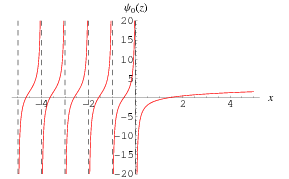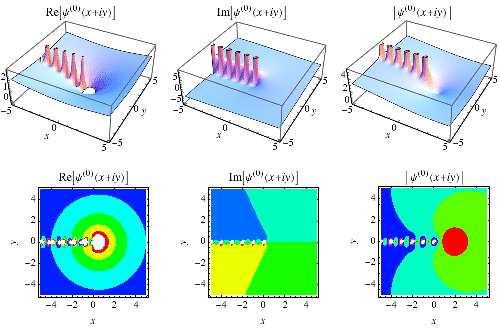

تاريخ الرياضيات

الاعداد و نظريتها

تاريخ التحليل

تار يخ الجبر

الهندسة و التبلوجي


الرياضيات في الحضارات المختلفة

العربية

اليونانية

البابلية

الصينية

المايا

المصرية

الهندية


الرياضيات المتقطعة

المنطق

اسس الرياضيات

فلسفة الرياضيات

مواضيع عامة في المنطق


الجبر

الجبر الخطي

الجبر المجرد

الجبر البولياني

مواضيع عامة في الجبر

الضبابية

نظرية المجموعات

نظرية الزمر

نظرية الحلقات والحقول

نظرية الاعداد

نظرية الفئات

حساب المتجهات

المتتاليات-المتسلسلات

المصفوفات و نظريتها

المثلثات


الهندسة

الهندسة المستوية

الهندسة غير المستوية

مواضيع عامة في الهندسة

التفاضل و التكامل


المعادلات التفاضلية و التكاملية

معادلات تفاضلية

معادلات تكاملية

مواضيع عامة في المعادلات


التحليل

التحليل العددي

التحليل العقدي

التحليل الدالي

مواضيع عامة في التحليل

التحليل الحقيقي

التبلوجيا

نظرية الالعاب

الاحتمالات و الاحصاء

نظرية التحكم

بحوث العمليات

نظرية الكم

الشفرات

الرياضيات التطبيقية

نظريات ومبرهنات


علماء الرياضيات

500AD

500-1499

1000to1499

1500to1599

1600to1649

1650to1699

1700to1749

1750to1779

1780to1799

1800to1819

1820to1829

1830to1839

1840to1849

1850to1859

1860to1864

1865to1869

1870to1874

1875to1879

1880to1884

1885to1889

1890to1894

1895to1899

1900to1904

1905to1909

1910to1914

1915to1919

1920to1924

1925to1929

1930to1939

1940to the present

علماء الرياضيات

الرياضيات في العلوم الاخرى

بحوث و اطاريح جامعية

هل تعلم

طرائق التدريس

الرياضيات العامة

نظرية البيان
Digamma Function
المؤلف:
Allouche, J.-P.
المصدر:
الجزء والصفحة:
...
20-8-2018
3696
Digamma Function

 |
A special function which is given by the logarithmic derivative of the gamma function (or, depending on the definition, the logarithmic derivative of the factorial).
Because of this ambiguity, two different notations are sometimes (but not always) used, with
 |
(1) |
defined as the logarithmic derivative of the gamma function  , and
, and
 |
(2) |
defined as the logarithmic derivative of the factorial function. The two are connected by the relationship
 |
(3) |
The  th derivative of
th derivative of  is called the polygamma function, denoted
is called the polygamma function, denoted  . The notation
. The notation
 |
(4) |
is therefore frequently used for the digamma function itself, and Erdélyi et al. (1981) use the notation  for
for  . The digamma function
. The digamma function  is returned by the function PolyGamma[z] or PolyGamma[0, z] in the Wolfram Language, and typeset using the notation
is returned by the function PolyGamma[z] or PolyGamma[0, z] in the Wolfram Language, and typeset using the notation  .
.
The digamma function arises in simple sums such as
 |
 |
 |
(5) |
 |
 |
 |
(6) |
where  is a Lerch transcendent.
is a Lerch transcendent.
Special cases are given by
 |
 |
 |
(7) |
 |
 |
 |
(8) |
 |
 |
 |
(9) |
 |
 |
 |
(10) |
Gauss's digamma theorem states that
 |
(11) |
(Allouche 1992, Knuth 1997, p. 94).
An asymptotic series for the digamma function is given by
 |
 |
 |
(12) |
 |
 |
 |
(13) |
 |
 |
 |
(14) |
 |
 |
 |
(15) |
 |
 |
 |
(16) |
where  is the Euler-Mascheroni constant and
is the Euler-Mascheroni constant and  are Bernoulli numbers.
are Bernoulli numbers.
The digamma function satisfies
 |
(17) |
For integer  ,
,
 |
(18) |
where  is the Euler-Mascheroni constant and
is the Euler-Mascheroni constant and  is a harmonic number.
is a harmonic number.
Other identities include
 |
(19) |
 |
(20) |
 |
(21) |
 |
(22) |
Special values are
 |
 |
 |
(23) |
 |
 |
 |
(24) |
At integer values,
 |
 |
 |
(25) |
 |
 |
 |
(26) |
(Derbyshire 2004, p. 58), and at half-integral values,
 |
 |
 |
(27) |
 |
 |
 |
(28) |
where  is a harmonic number.
is a harmonic number.
It is given by the unit square integral
 |
(29) |
for  (Guillera and Sondow 2005). Plugging in
(Guillera and Sondow 2005). Plugging in  gives a special case involving the Euler-Mascheroni constant.
gives a special case involving the Euler-Mascheroni constant.
The series for  is given by
is given by
 |
(30) |
A logarithmic series is given by
 |
(31) |
(Guillera and Sondow 2005).
A surprising identity that arises from the FoxTrot series is given by
 |
(32) |
REFERENCES:
Abramowitz, M. and Stegun, I. A. (Eds.). "Psi (Digamma) Function." §6.3 in Handbook of Mathematical Functions with Formulas, Graphs, and Mathematical Tables, 9th printing. New York: Dover, pp. 258-259, 1972.
Allouche, J.-P. "Series and Infinite Products related to Binary Expansions of Integers." 1992. http://algo.inria.fr/seminars/sem92-93/allouche.ps.
Arfken, G. "Digamma and Polygamma Functions." §10.2 in Mathematical Methods for Physicists, 3rd ed. Orlando, FL: Academic Press, pp. 549-555, 1985.
Boros, G. and Moll, V. "The Psi Function." §10.11 in Irresistible Integrals: Symbolics, Analysis and Experiments in the Evaluation of Integrals. Cambridge, England: Cambridge University Press, pp. 212-215, 2004.
Derbyshire, J. Prime Obsession: Bernhard Riemann and the Greatest Unsolved Problem in Mathematics. New York: Penguin, 2004.
Erdélyi, A.; Magnus, W.; Oberhettinger, F.; and Tricomi, F. G. "The  Function." §1.7 in Higher Transcendental Functions, Vol. 1.New York: Krieger, pp. 15-20, 1981.
Function." §1.7 in Higher Transcendental Functions, Vol. 1.New York: Krieger, pp. 15-20, 1981.
Guillera, J. and Sondow, J. "Double Integrals and Infinite Products for Some Classical Constants Via Analytic Continuations of Lerch's Transcendent." 16 June 2005 http://arxiv.org/abs/math.NT/0506319.
Havil, J. Gamma: Exploring Euler's Constant. Princeton, NJ: Princeton University Press, 2003.
Jeffreys, H. and Jeffreys, B. S. "The Digamma ( ) and Trigamma (
) and Trigamma ( ) Functions." Methods of Mathematical Physics, 3rd ed.Cambridge, England: Cambridge University Press, pp. 465-466, 1988.
) Functions." Methods of Mathematical Physics, 3rd ed.Cambridge, England: Cambridge University Press, pp. 465-466, 1988.
Knuth, D. E. The Art of Computer Programming, Vol. 1: Fundamental Algorithms, 3rd ed. Reading, MA: Addison-Wesley, 1997.
Spanier, J. and Oldham, K. B. "The Digamma Function  ." Ch. 44 in An Atlas of Functions. Washington, DC: Hemisphere, pp. 423-434, 1987.
." Ch. 44 in An Atlas of Functions. Washington, DC: Hemisphere, pp. 423-434, 1987.
 الاكثر قراءة في التفاضل و التكامل
الاكثر قراءة في التفاضل و التكامل
 اخر الاخبار
اخر الاخبار
اخبار العتبة العباسية المقدسة

الآخبار الصحية















 قسم الشؤون الفكرية يصدر كتاباً يوثق تاريخ السدانة في العتبة العباسية المقدسة
قسم الشؤون الفكرية يصدر كتاباً يوثق تاريخ السدانة في العتبة العباسية المقدسة "المهمة".. إصدار قصصي يوثّق القصص الفائزة في مسابقة فتوى الدفاع المقدسة للقصة القصيرة
"المهمة".. إصدار قصصي يوثّق القصص الفائزة في مسابقة فتوى الدفاع المقدسة للقصة القصيرة (نوافذ).. إصدار أدبي يوثق القصص الفائزة في مسابقة الإمام العسكري (عليه السلام)
(نوافذ).. إصدار أدبي يوثق القصص الفائزة في مسابقة الإمام العسكري (عليه السلام)


















